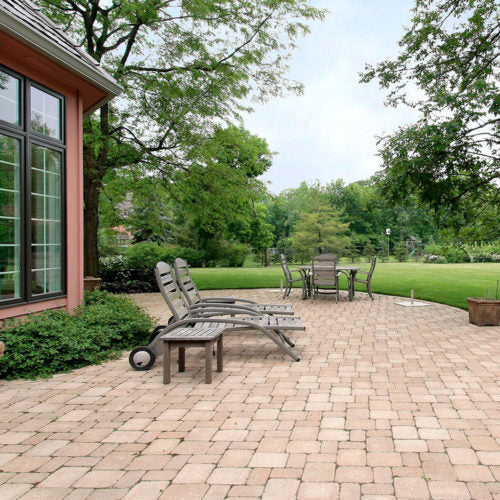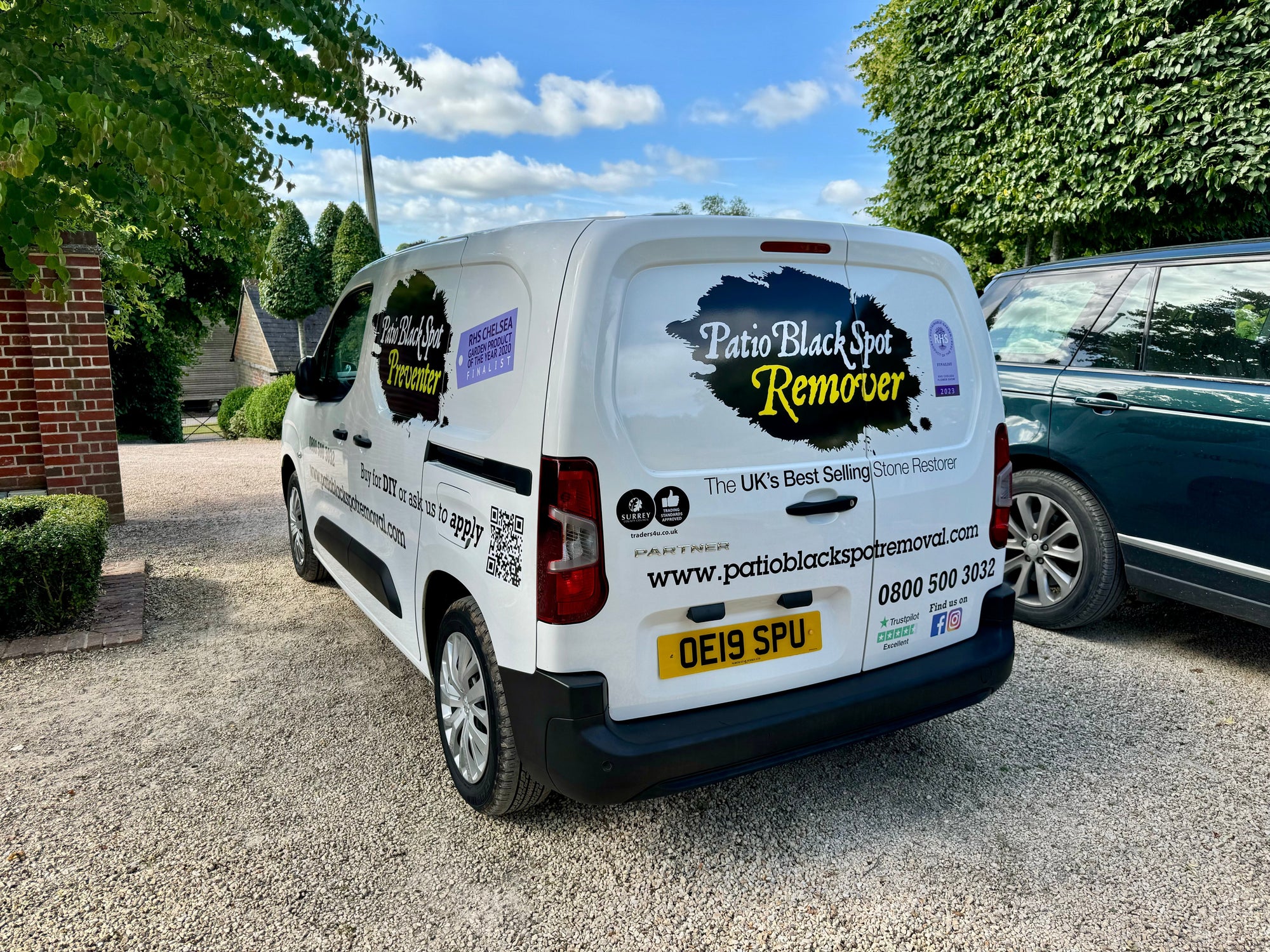We’ve all spent time, money and effort laying a new patio, only to look down one day and notice unsightly black spots creeping across the surface. These marks aren’t just a cosmetic issue - they can make the whole area feel dirty and uncared for, no matter how much we sweep or jet wash. Many of our customers ask us what these marks are and, more importantly, how to get rid of them. We’ve dealt with this issue across countless properties and surfaces, and our experience has taught us there’s more to it than just dirt or weather staining.
Black spots are notoriously persistent and don’t respond to basic cleaning. They can be particularly frustrating because they can reappear even after a deep clean. The root cause tends to be organic in nature, with the most common culprit being a type of lichen. These stubborn organisms thrive in the damp, porous surfaces of patios - especially those made from natural stone like sandstone, limestone or slate. Knowing what causes them is key to removing them properly and preventing them from coming back.
What Are Black Spots on Patios?
Black spots are caused by a black lichen that gets nestled down into the pores of stone and concrete surfaces. They feed off the mineral in the stone, iron in natural patios such as sandstone. They thrive in moisture and damp conditions, and once they’ve anchored themselves into your patio, they can’t be removed with a pressure wash. On artificial flagstones, you may be able to remove the head of the spot, but these will return in a matter of months.
They tend to appear more readily in north-facing, shaded areas. As early as the third year of a brand new patio being laid. The longer they are left, the worse the problem gets as the lichen establishes itself. Their spore-based reproduction also means they spread easily. If one part of your patio has black spots, they’ll likely show up elsewhere too, unless treated properly.
Why Are They So Difficult to Remove?
The resilience of black spots lies in their structure. The spores of lichen embed deep within the pores of your patio’s surface. Unlike moss or green algae that tend to stay on the surface and can often be removed with a pressure washer or even a stiff brush and soapy water, lichen is deeply rooted. Standard jet washing may remove the top layer but leaves the embedded spores intact, allowing them to regrow quickly.
We’ve also found that certain types of stone are more susceptible. Porous stones like sandstone and limestone provide the ideal environment for spores to take hold. Even concrete slabs can become breeding grounds over time. If your patio is laid in an area with a lot of leaf litter, overhanging trees, or damp conditions, the risk of lichen increases significantly.



